The French Defense is one of the oldest chess openings in the game. It is very popular among all levels, from master level to amateur.
At master level, it is the third most played reply to the king’s pawn opening (1. e4) and over 137,000 French Defense games have been played.
The French Defense is characterized by the moves 1.e4 e6, where Black’s e-pawn advances one square to create a solid pawn structure and control the d5 square.
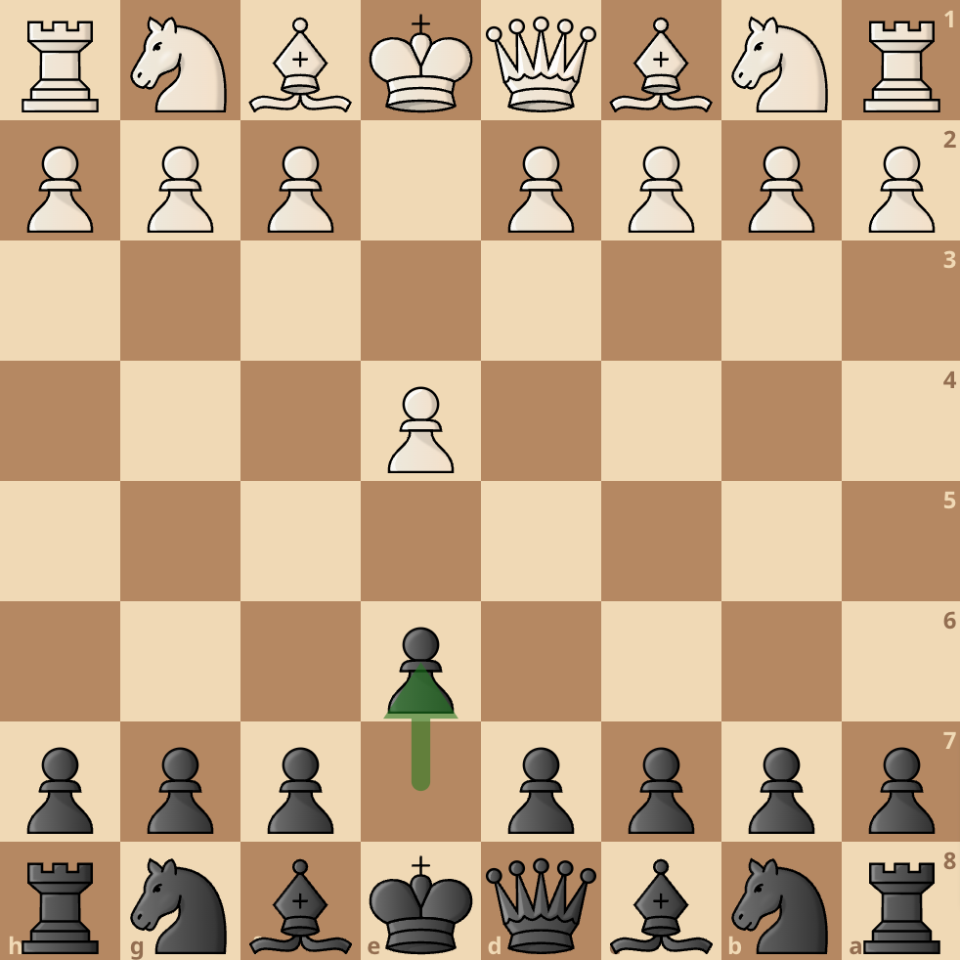
The key move, 1…e6, is the trademark of the French Defense, setting it apart from other openings.
Black plays e6 to prepare a d7-d5 thrust with the d-pawn. The e6 pawn would provide support to the d-pawn if it gets captured, so the queen does not have to come out early to recapture the pawn.
After 1…e6, the most played move by White and by far the best move is 2. d4.
d4 allows White to gain an ideal pawn development in the center with pawns on e4 and d4, it also opens up both bishops and allows them to be developed easily.
After d4, Black gets to choose what variation they want to go for, the most popular variations are:
- Classical Variation
- Advance Variation
- Tarrasch Variation
- Winnawer Variation
- Exchange Variation
We will take a look at each of them and explain the ideas around the moves.
Classical Variation
1. e4 e6 2. d4 d5 3. Nc3 Nf6
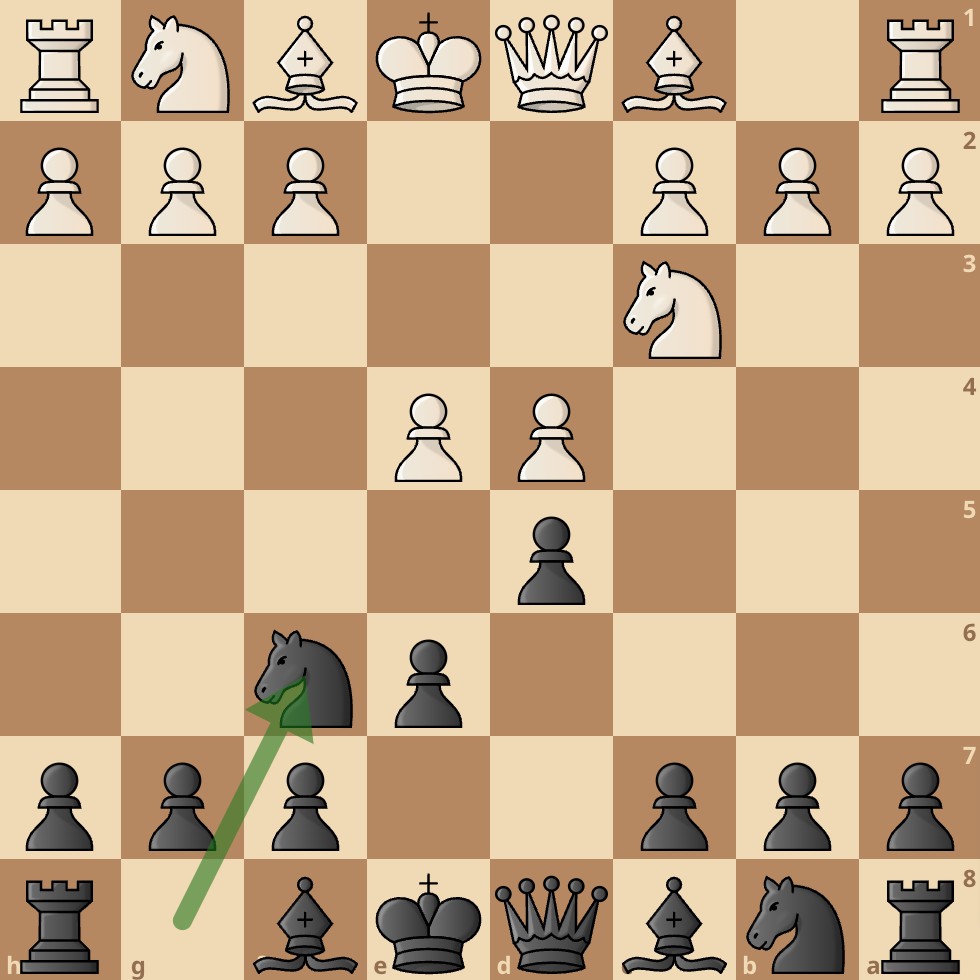
The classical variation used to be the go-to response for any player who faced the French in earlier times.
In this variation, the players focus their attention on the fight for the center. Black’s d5 pawn and f6 knight directly challenge the e4 pawn, therefore White has to do something about this.
The two popular choices in this position are to either play 4. e5 or 4. Bg5
4. e5
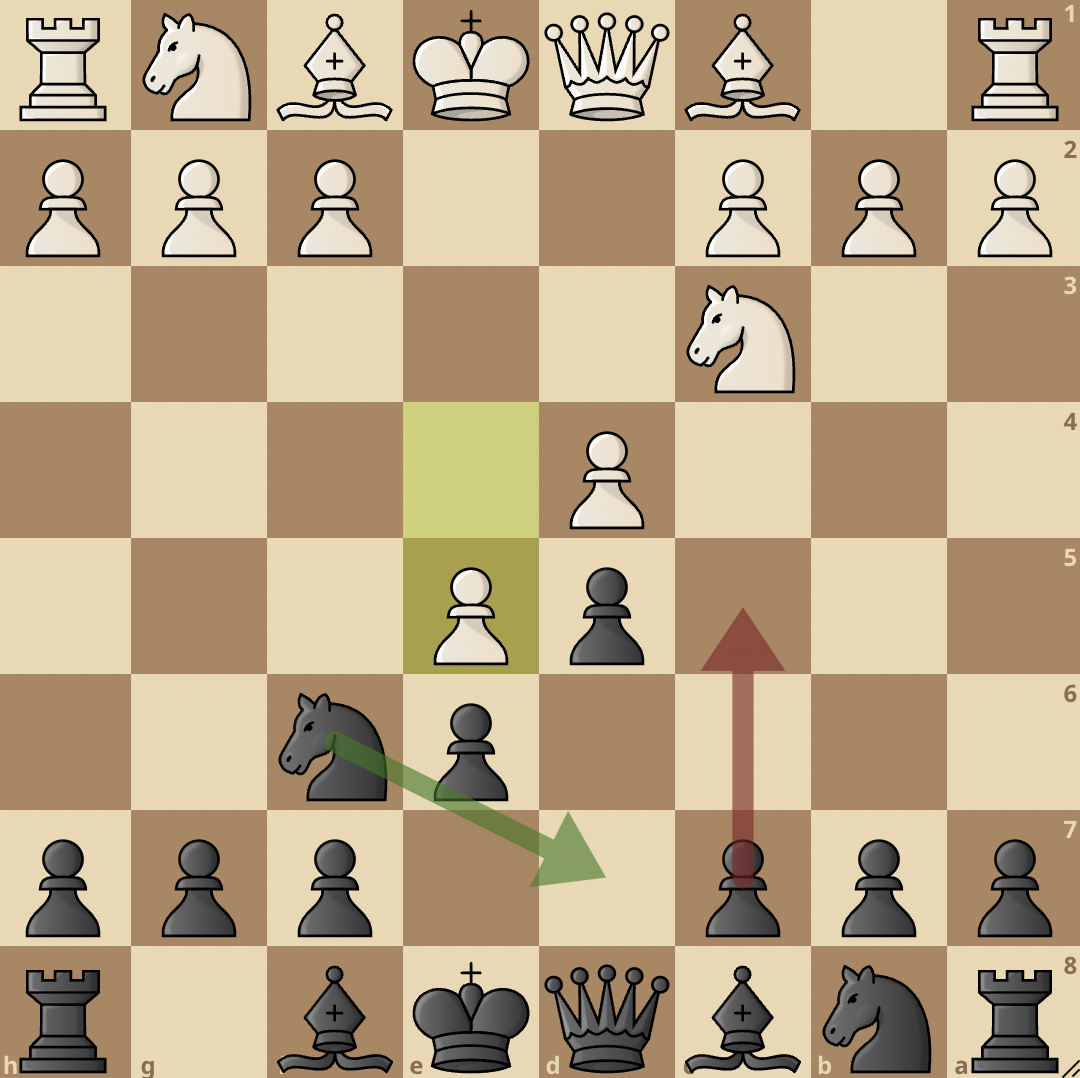
If White chooses to play 4. e5, they immediately close the center and in doing so, they also gain a tempo on the f6 knight, as the knight has to move.
After e5, Black has to retreat the knight so they play 4. Nfd7, White then expands and plays 5. f4, adding more solidity to their e5 pawn and controlling the g5 square. Black will challenge the structure White has created in the center with 5…c5.
Capturing on c5 is not a very good idea for White as it releases some tension in the center too early and it also allows Black to develop their bishop with tempo.
6. Nf3 is the best move here. Black will look to continue expanding on the queenside with moves like …a6 and …b5 while White will look to calm things down on the queenside and start a kingside attack.
4. Bg5
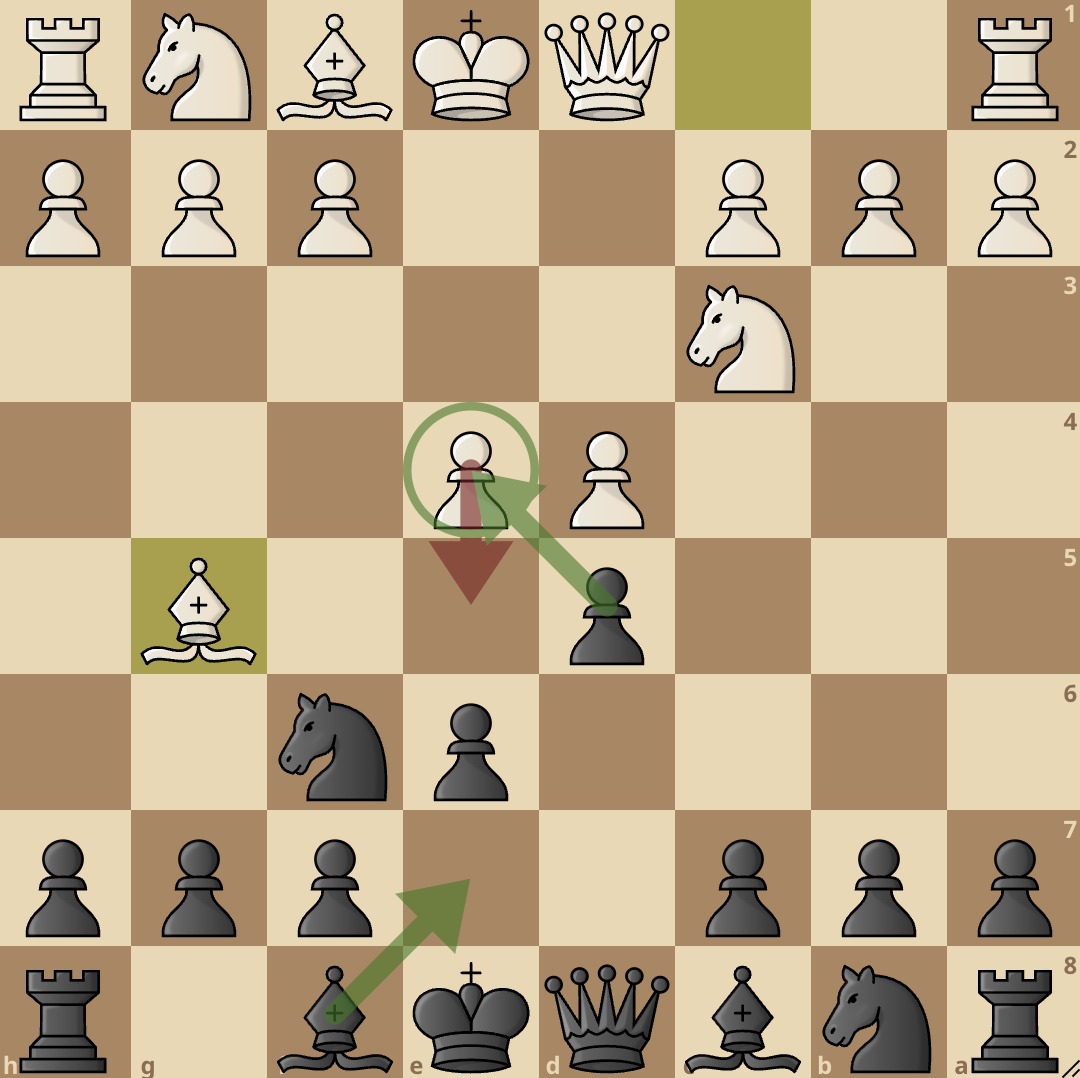
After 3…Nf6, White can decide not to play 4. e5 and instead play 4. Bg5. The bishop on g5 pins the f6 knight to the queen and prepares to trap the knight with e5.
Black has various ways of combating this, (they can play 4…h6 or 4…Be7,) however, the safest and most popular way Black continues is to simply play 4…dxe4.
…dxe4 eliminates the possibility of e5. The game continues with 5. Nxe4, Black then plays 5…Be7 and 6. Bxf6 comes. Black can now choose between the calm 6…Bxf6 or the sharper 6…gxf6.
…gxf6 opens up the kingside and doubles Black’s pawns, but it also gives Black an avenue to attack from the g-file.
Advance Variation
1. e4 e6 2. d4 d5 3. e5

The purpose of the Advance Variation is for White to aggressively advance the e-pawn, aiming to control the central squares and restrict Black’s pawn breaks.
White gains space on the board, but the weakness of the d4-pawn and overextension of pawns can be exploited by Black.
As a player with the Black pieces opting for the French Defense, you must be prepared for your opponent to advance into your territory early on in the game.
After 3. e5, you (Black) must look toward immediately attacking your opponent’s hold on the center. 3…c5 is highly recommended because it places immediate pressure on e5’s protector.
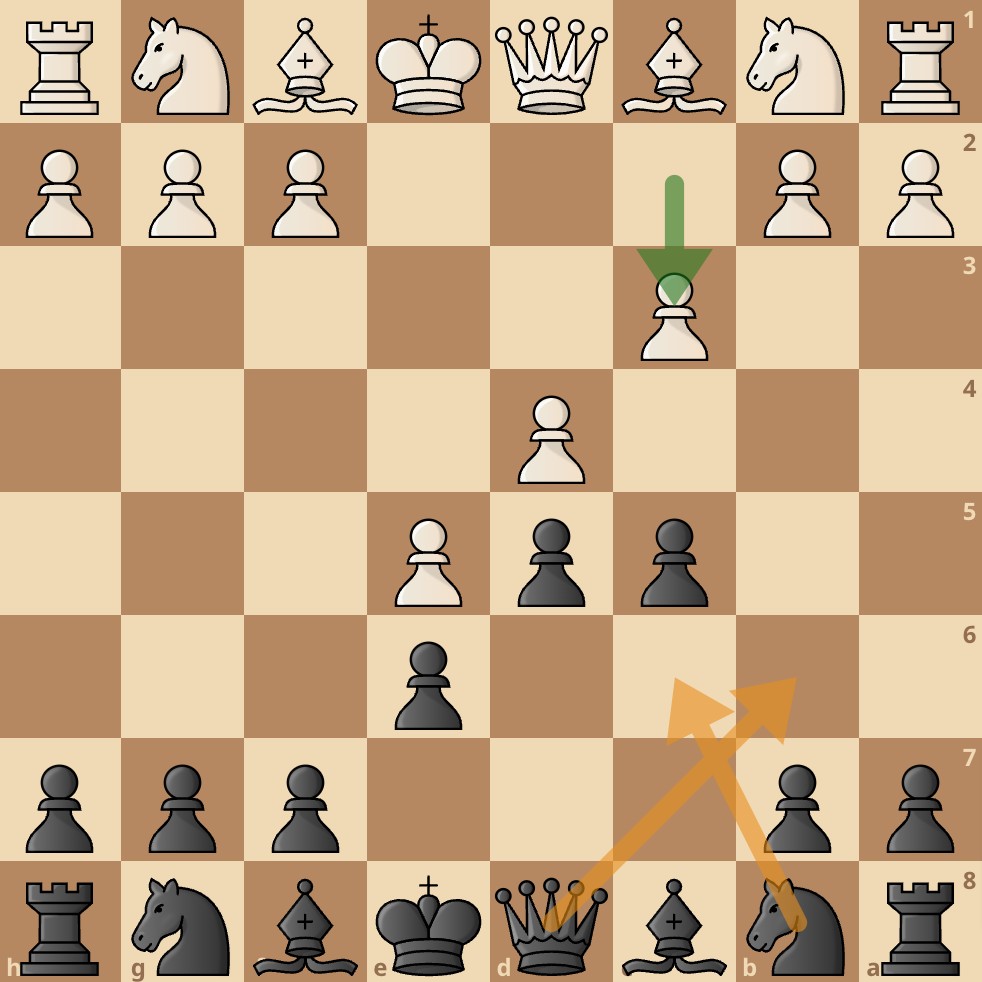
4. c3 is likely to follow, but this is what you wanted because now, White cannot develop their knight to c3 and reinforce their control of the center.
A further idea to continue from this position is to develop the knight to c6 and queen to b6 with …Nc6 and …Qb6.
Tarrasch Variation
1. e4 e6 2. d4 d5 3. Nd2

The Tarrasch variation is the second most played move for White after 2…d5. It starts with 3. Nd2.
Nd2 prevents Black from playing the usual Bb4 (if White played 3. Nc3) and pinning the knight.
However, since the knight is on d2, it blocks the dark-squared bishop and does not put pressure on the d5.
The Tarrasch variation is a less risky variation of the French, however, it does not give White many attacking chances.
Winawer Variation
1. e4 e6 2. d4 d5 3. Nc3 Bb4

The Winnawer variation starts after 3. Nc3 and Black plays 3…Bb4.
By playing Bb4, Black pins down the c3 knight and later on, captures the knight and possibly double White’s pawns.
The dark-squared bishop is Black’s stronger bishop in this variation, however, giving it up for the knight has its advantages as it gives Black a superior pawn structure on the queenside.
Exchange Variation
1. e4 e6 2. d4 d5 3. exd5 exd5
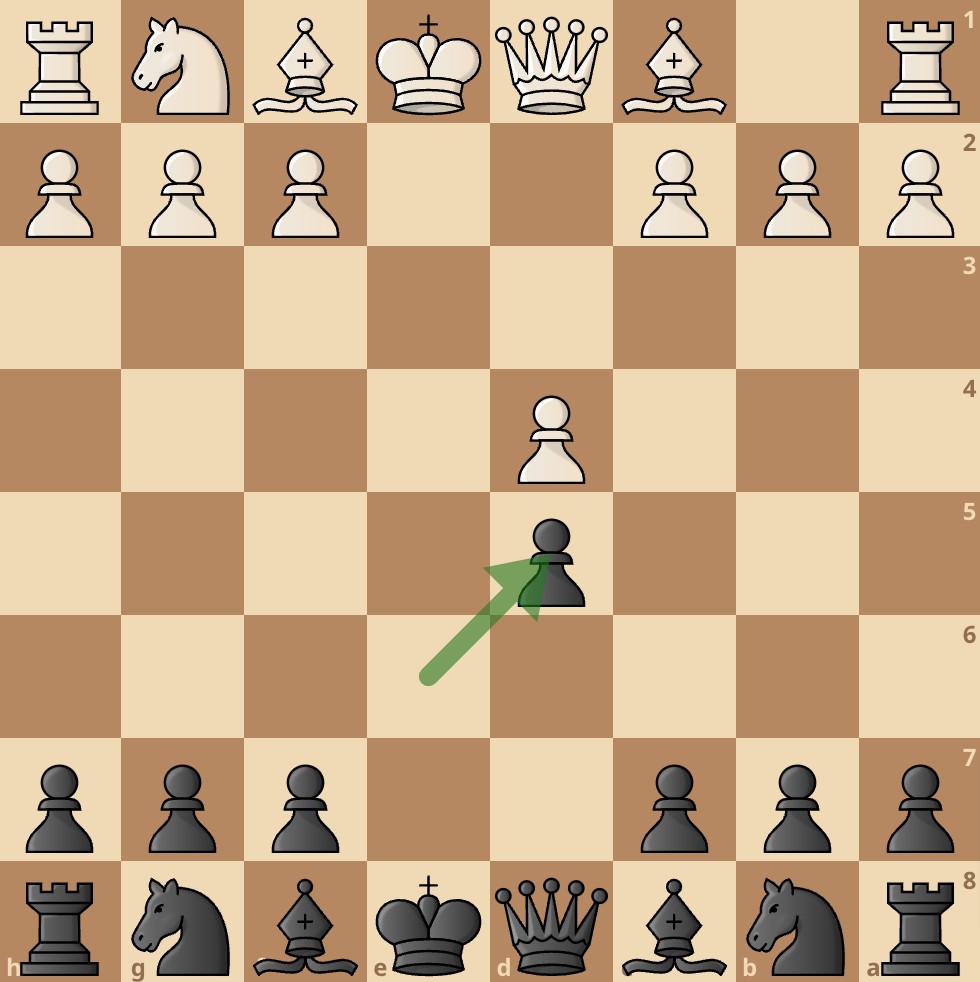
The Exchange variation happens after White decides to capture early with 3. exd5. However, this results in Black equalizing and the game taking on a dull and drawish line.
The pawn structure after Black recaptures with 3…exd5 is a symmetrical pawn structure with little room for any positional imbalances.
This line is usually played by those who want an easy game or a simple draw.
Tactics and Pawn Structures In The French Defense
We will now examine some common structures in the French Defense and the tactical ideas behind them.
Isolated Queen’s Pawn (IQP)
A key pawn structure in the French Defense is the Isolated Queen’s Pawn. It occurs when Black captures in the center, and White’s c-pawn recaptures, leaving an isolated pawn on d4.
A sample position below can be seen here:
1. e4 e6 2. d4 d5 3. Nd2 c5 4. c3 dxe4 5. Nxe4 cxd4 6. cxd4
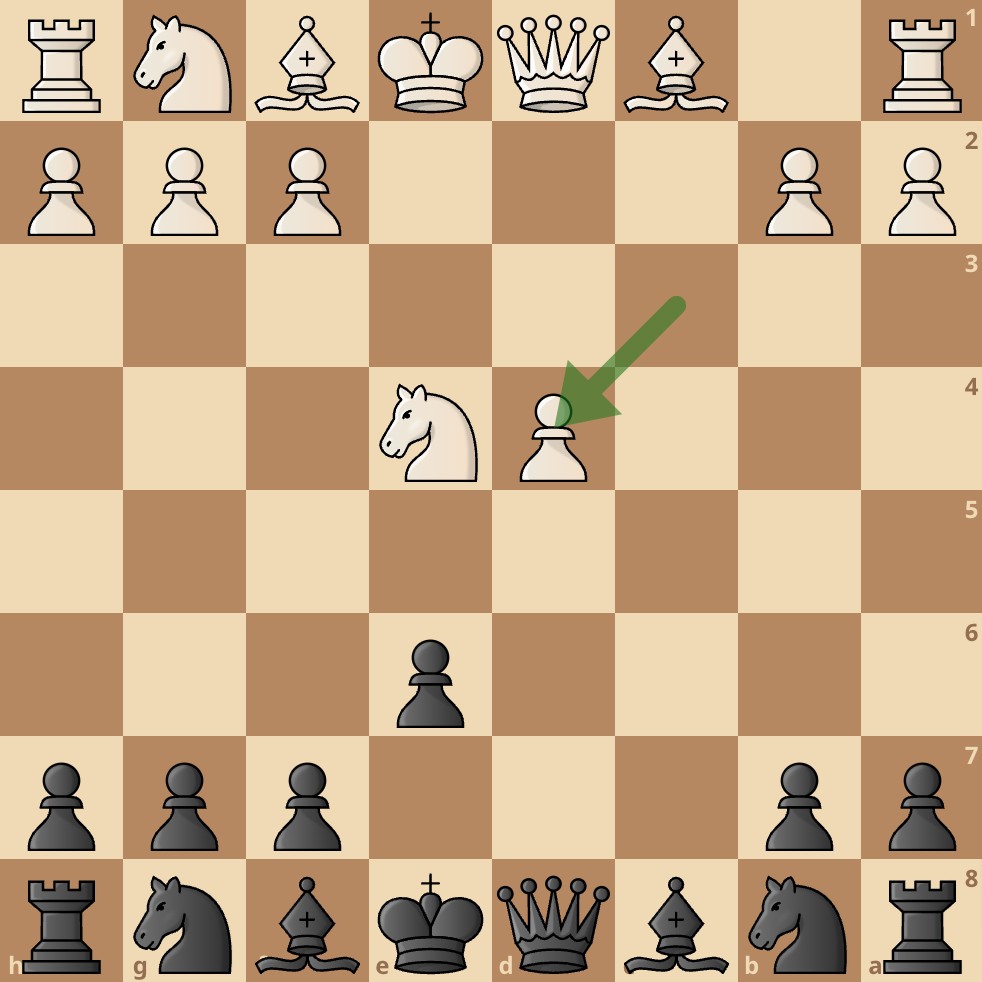
The IQP offers both advantages and drawbacks. It can be used to support active central outposts for the side with the isolated pawn, but it can also be a huge weakness when the opposition lines up pieces against the pawn or uses it as a blockade.
Pawn Chains
The French Defense can sometimes lead to pawn chains, such as the e6-d5-f7 pawn chain for Black and the e5-d4-c3 pawn chain for White. Understanding how to break or strengthen these chains is crucial for both sides.
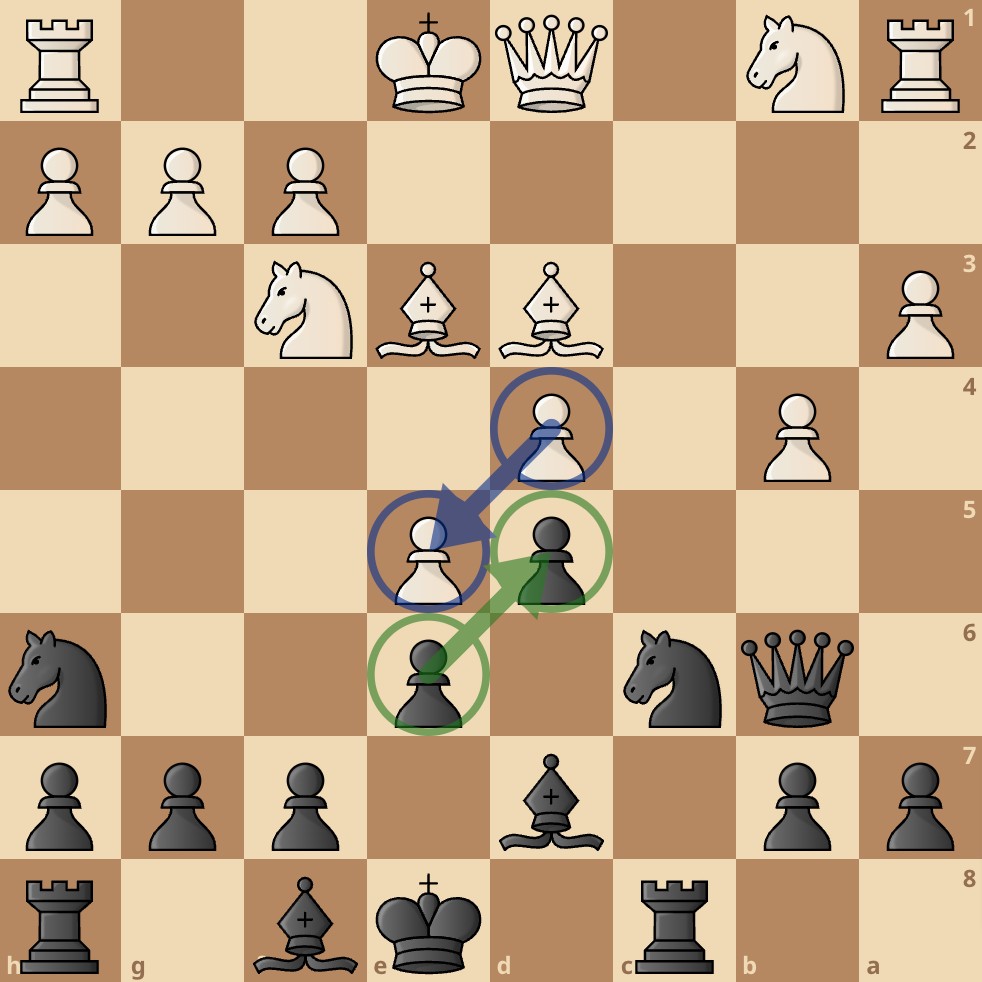
This tutorial below will help you get familiarized with important tactical patterns in the opening.
Successful Deployments
Touch the moves or move the board around for a better interactive experience.
Michael Adams v Fabiano Caruana, Dresden Olympiad (2008)
While the Tarrasch variation is known to not offer a lot of attacking chances, Fabiano Caruana was still able to convert the limited chances to a win when he faced Michael Adams in the 2008 Dresden Olympiad.
Judit Polgar v Evgeny Bareev, Cannes World Cup Rapid (2001)
This game by Judit Polgar and Evgeny Bareev is a very instructive one that shows how to play the Classical variation of the French.
Mikhail Tal v Mikhail Botvinnik, Botvinnik – Tal World Championship Match (1960)
The 1960 World Championship Match was a treat for the entire chess world. It featured some very nice games and one of them featured a lesson by Mikhail Tal where he showed an excellent way to play against the French.




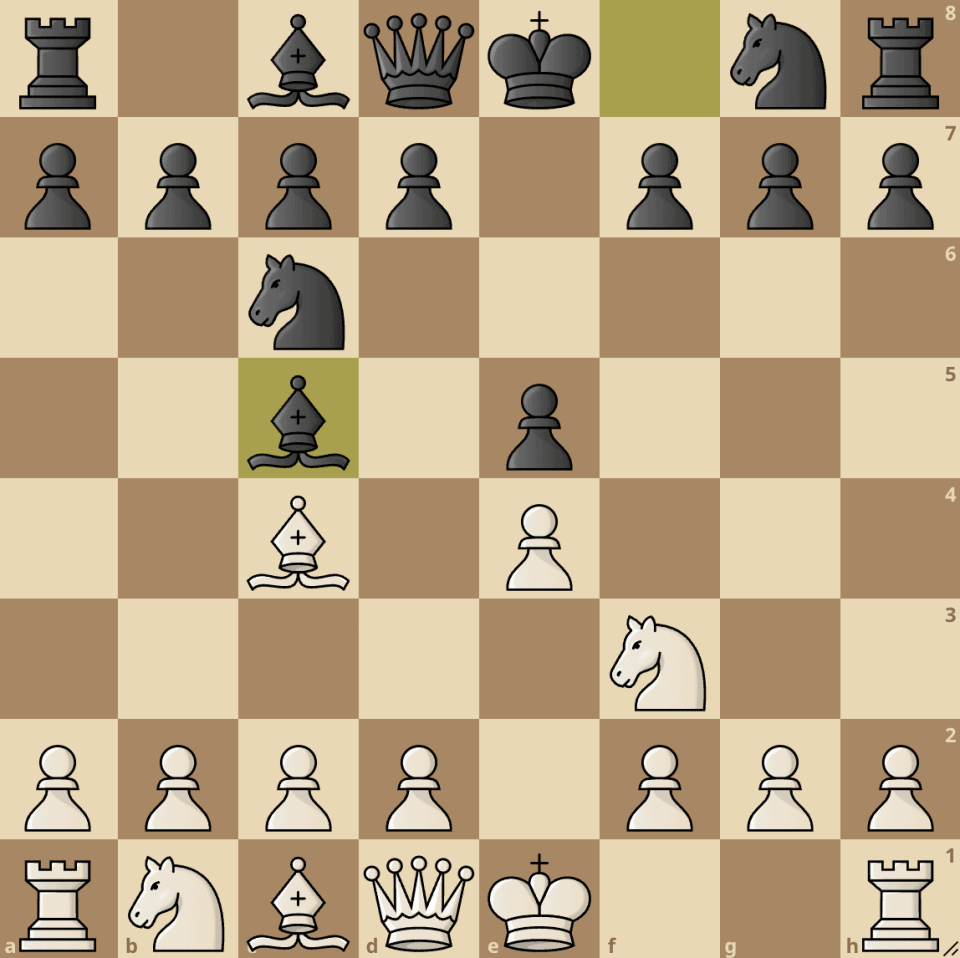

join the conversation